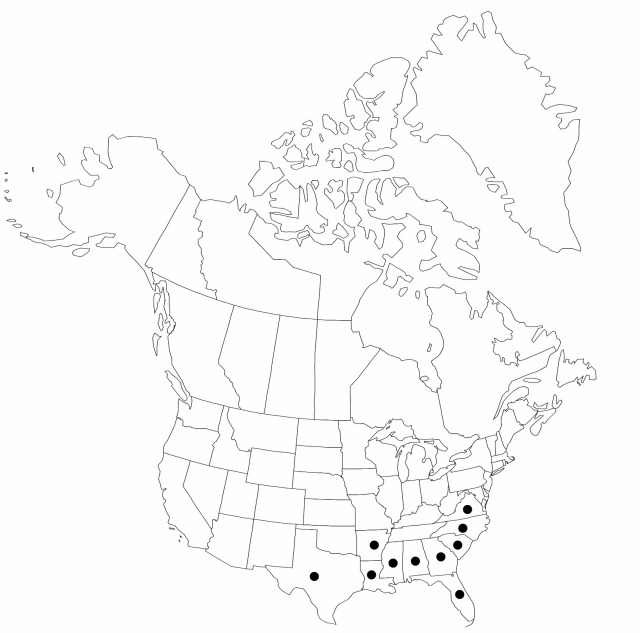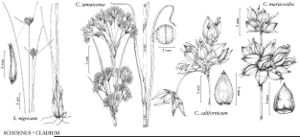Cladium jamaicense
Inst. Rei Herb. 1: 362. 1766.
Rhizomes to 20 cm × 10 mm. Culms 1–3 m × 5–10 mm. Leaves: blades flat to broadly V-shaped, 5–11 mm wide, margins and midvein abaxially harshly scabrous with teeth visible to unaided eye. Inflorescences terminal (or lateral and terminal), 30–50 cm; 1st, 2d, 3d, and some 4th order branches, branches slightly flexuous. Spikelets in groups of 2–3(–6), narrowly ellipsoid to lanceolate; floral scales 5–6, the proximal chestnut brown, ovate to oblong-lanceolate, 2.5–3 × 2 mm, midvein conspicuous, lateral veins weak; stamens 2; anthers 2 mm, connective apices 0.1–0.2 mm; styles 2–2.5 mm; stigmas 1–1.5 mm. Achenes light greenish brown, ovoid, 2 × 1 mm, glossy, base vaguely 3-lobed, truncate, not flared or discoid, apex acute, irregularly rugulose longitudinally.
Phenology: Fruiting spring–summer.
Habitat: Coastal brackish and fresh marshes
Elevation: 0–100 m
Distribution

Ala., Ark., Fla., Ga., La., Miss., N.C., S.C., Tex., Va., Mexico, West Indies, Central America, n South America.
Discussion
Cladium jamaicense is important as the dominant species in much of the Florida Everglades (K. K. Steward and W. H. Ornes 1975).
